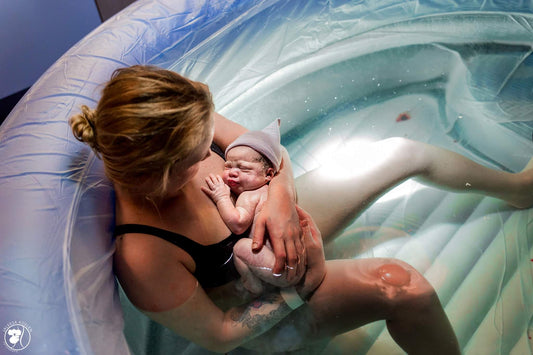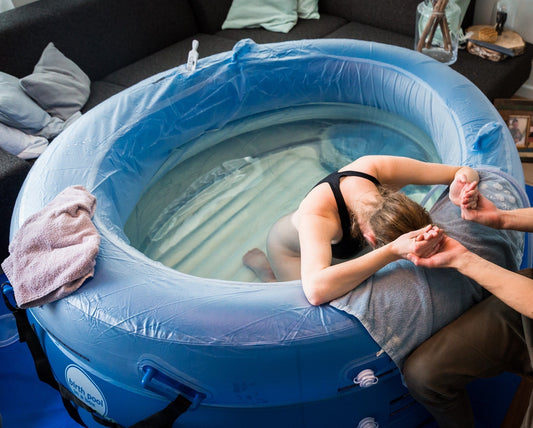Estimating blood loss during a water birth
Charlotte Buiter
Monitoring blood loss
Estimating blood loss in childbirth is complex. Outside the bath, the most accurate possible measurement method is to weigh cellular mats of blood loss. A caveat is that this may involve urine or amniotic fluid loss that is included. In a bath birth, blood loss is determined by a visual assessment by the midwife.
The white bottom is an important aid in the estimation, as this colour provides the best contrast between the bath itself, the barb and the blood loss. Blood loss and any clots stand out well because of the light ground. A different colour bottom would adversely affect the visibility and estimation of blood loss.
Guide
Most training scenarios for estimating blood loss in baths are performed with fake blood. This can distort reality. An Australian organisation has therefore realised a visual aid in which real blood was used in a 2-person Birth Pool in a Box delivery bath filled with 37°C water at maximum fill level. In this situation, it was found that when the white bottom is no longer visible, there is +- 1000 ml of blood loss.

The images taken serve as a guide for healthcare providers to make a rough estimate of blood loss.
Please note: we are aware that blood loss, especially in a bath birth, is poorly measurable. Combined with other factors, this guide can help determine policy during labour.
Always have this information to hand or share it with others? Then download the information sheet including images for estimating blood loss.



